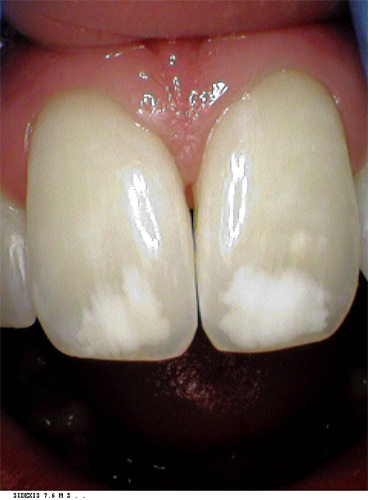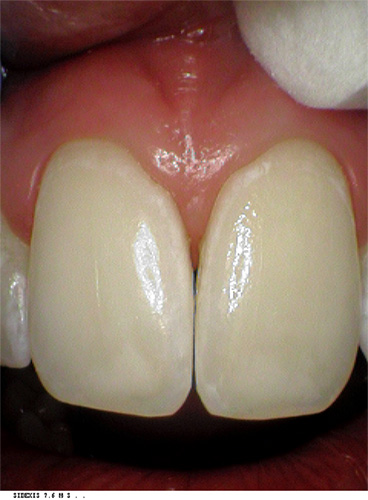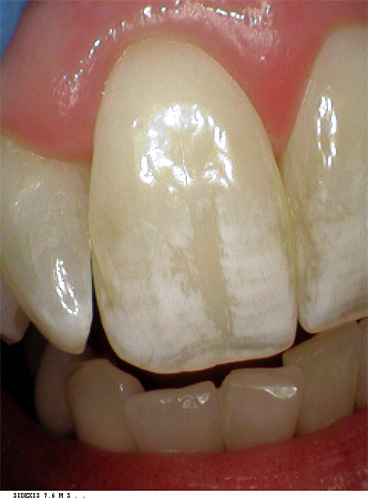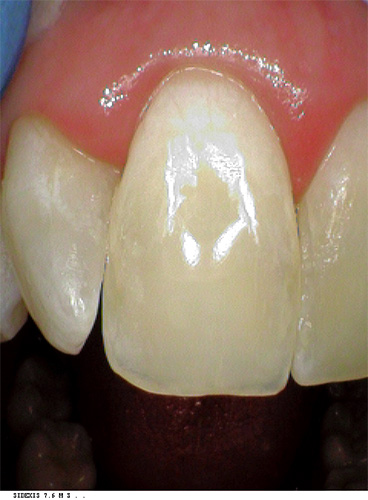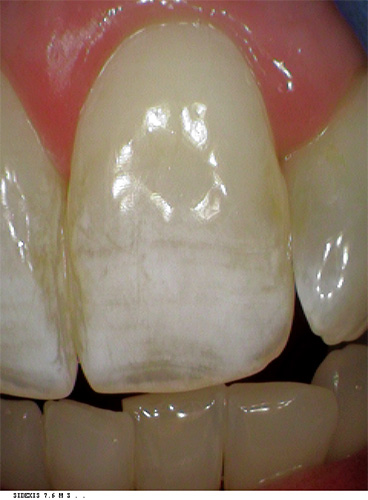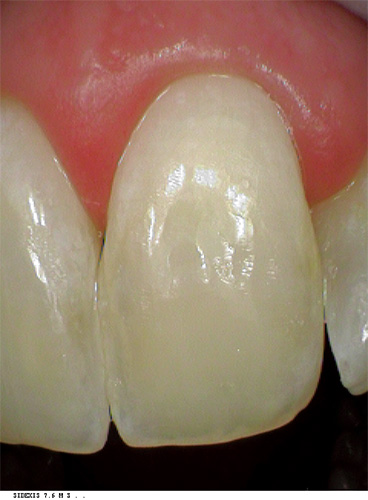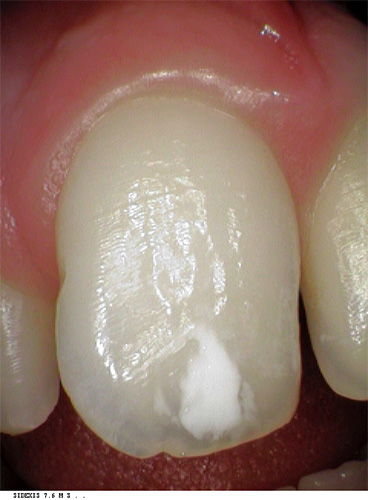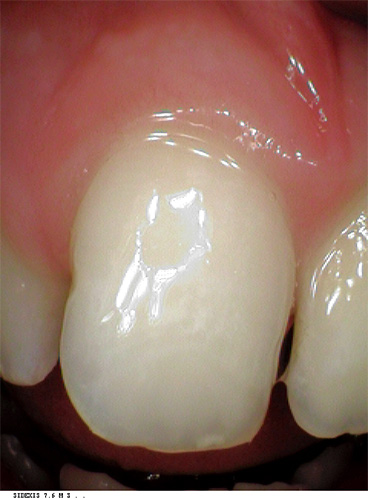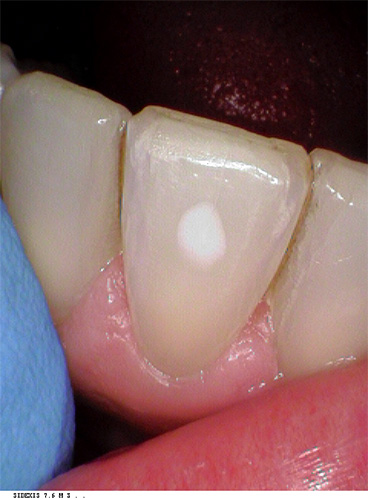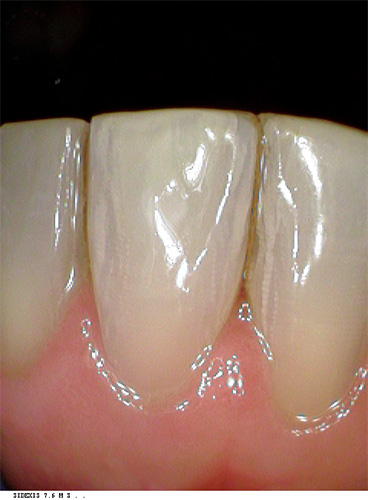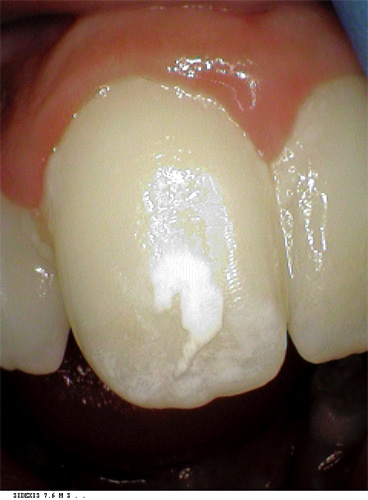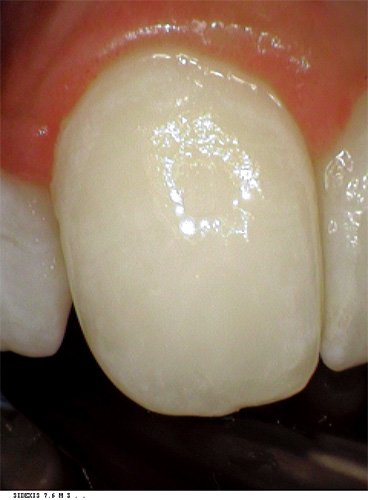St. Lawrence Dentistry offers a minimally invasive treatment option for cosmetic defects and minor enamel cavities. Included are teeth with ‘white spots’ or which have a cloudy appearance.
White Spots on Teeth Treatment
To treat white spots, Dr. Hawryluk Jr. uses a product called ICON, which is the first-ever white spot treatment product that acts by a process called ‘infiltration.’ It’s an ideal treatment method as there is no drilling on the tooth in many cases. It can treat a white spot that has progressed well into the dentin layer of the tooth. White spot lesions are not only a cosmetic issue but are sometimes a visible stage of an early cavity. If they are cavity related, they should be treated at this early ‘white spot’ stage so they won’t progress.
White spot lesions are the result of a cyclical imbalance between demineralization and demineralization. Bacteria that create acid can lead to the breakdown of a tooth—leaching of calcium and phosphate ions from the tooth can occur under these circumstances. If there is not a chance for a remineralization period, white spots can form. This imbalance changes light reflection from teeth.
Different aspects of the tooth surface will reflect, refract, and absorb different wavelengths of light at varying degrees. A disturbance in the enamel matrix results in an altered appearance. The outer layer of the tooth’s dissolution begins with subsurface demineralization creating pores between the enamel rods (a type of tooth structure). Mineral loss creates an optical phenomenon or chalky white enamel. Surface roughness and failure of surface shine result in an altered refractive index and increased visual opacity. These white spots or alterations in tooth color can also result from trauma, infection, lack of minerals, fluorosis, fever, premature birth, illness during gestation, or it can have a genetic origin. Also, there is a correlation between white spots with dental plaque and the presence of orthodontic brackets.
There are two classes of white spot lesions, and Dr. Hawryluk will diagnose what your situation is. The first is ‘Active Lesions’. These may improve on their own with adequate oral hygiene. A dull pitted and irregular surface is characteristic of this class. They have a favorable prognosis to regain their clarity due to porosity, which readily allows the incorporation of calcium and phosphate. The second is ‘Arrested Lesions’ – these are unlikely to reverse on their own. A flat and shiny white or sometimes a brown surface is characteristic of these latter lesions. They have a lack of porosity and formation of a remineralized layer on the outer part of the tooth. In both these cases, the new ICON technology reinforces demineralization areas by capillary action uptake of highly fluid resin, which seals enamel porosities and creates a diffusion barrier preventing further cavitation or breakdown of the tooth. Infiltration of resin impregnates the voids left by decalcification. It has the same refractive index of enamel, so it restores the optical nature of the treated tooth surface to its natural aesthetics without removing the enamel.
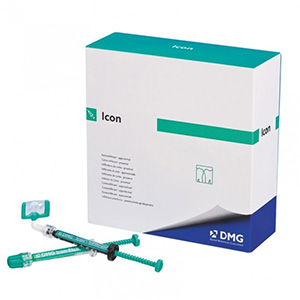
Depending on the size of the lesion, Dr. Hawryluk may suggest bleaching first, as this may reduce the size of the white marks and the entire appearance of the lesion. The white spots may appear whiter and brighter as the bleaching commences. If the patient recently finished orthodontics, Dr. Hawryluk may suggest waiting three months due to the ability of some of the lesions to regress.
To learn more about dental bleaching, please visit us here:
Teeth are thoroughly cleaned before ICON treatment, ensuring no plaque is present. A subsequent conditioner application provides the successful removal of the surface zone of any early breakdown, which helps facilitate the infiltration process. After the conditioner use, the pores in the white spot will be open and accessible to an ‘infiltration’ process. The application of the infiltrate is allowed to penetrate the white spot for three minutes. Removal of excess resin is accomplished by swiping a cotton roll and using dental floss. Finally, the resin will be light-cured. By successfully filling the area with the infiltrate, the breakdown is stabilized, sealed, and progression arrested.
Below is a link to an excellent video showing the process:
White spot treatment with DMG ICON
The after procedure instructions are as follows: For at least 24 hours after treatment, refrain from any dark-colored foods or beverages that may stain teeth. Its recommended brushing softly with a warm salt water rinse along with eating soft foods. Please remember to brush in the morning and at night with extra focus on the gum line and floss daily to ensure clean and healthy gums.
The visual presentation of the tooth defect is impressive after the infiltration. The lesion’s pore volume is replete with a medium that has a similar light reflection index to healthy enamel, so the white spot can no longer readily be detected. Dr. Hawryluk will finish the treatment with fine polishing aids. Do not worry about the resin changing the color of the tooth; it just mimics the natural color of the tooth.
A further advantage of this innovative treatment is it does not change in any way the anatomical shape of the tooth. ICON combines state of the art dentistry with the patient’s wish for drill-free treatment to protect and preserve healthy tooth structure. You can achieve a very satisfactory treatment result is in a single sitting.
If you would like more information about ICON drill-free treatment at St. Lawrence Dentistry, please give us a call.



